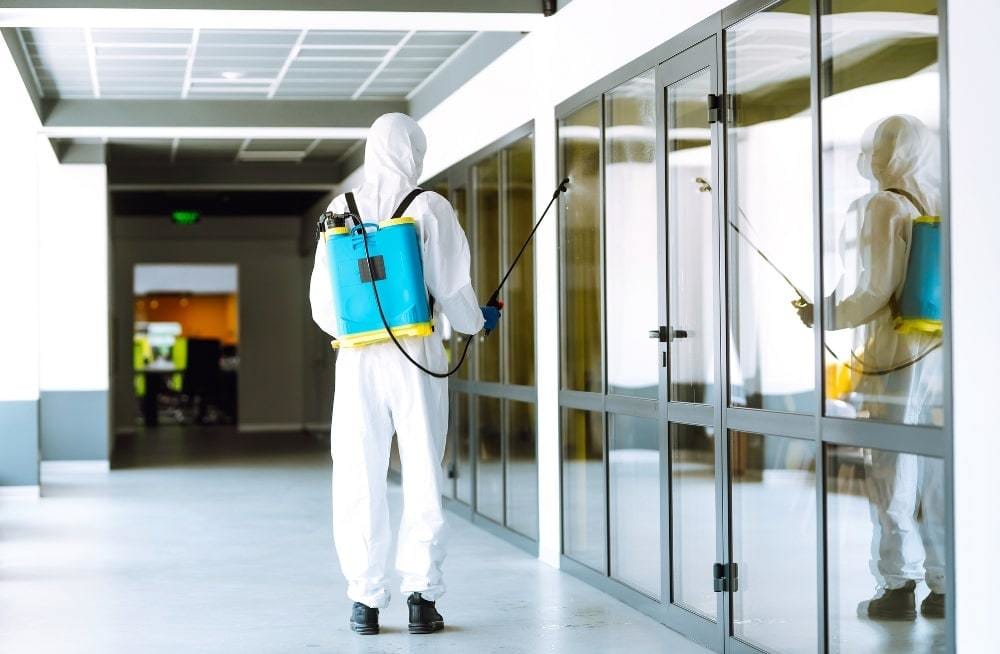Safety considerations to make your workplace Covid-19 safe
- by Cathy Houghton
Government guidelines relating to COVID-19 and the safe reopening of industry sectors now come in a large and hefty format.
Laying out prescriptive guidelines linking to all safety considerations and health and safety plans that businesses and workforces must abide by to ensure everyone’s safety.

Health and safety in the workplace are changing.
And quickly.
With this in mind, in this post, we take a look at some of the plans set out linked to workwear and safety gear required for those returning to the industry.
Guidance for business
Guidance for workplaces has been published following consultation with employees, trade unions, Public Health England, and the Health and Safety Executive.
Identified as the best ways to help combat the virus and keep transmission rates low includes:
- Maintaining social distancing
- Improving cleaning processes
- Implementing the correct PPE where appropriate
- Washing your hands regularly.
Businesses need to begin thinking of reopening like a balancing act, i.e., balancing the job of getting businesses back up and running, with the task of keeping teams safe and secure as much as possible.
Securing your workplace
It is still advised that employees continue to work from home unless this is 100% not possible. In these instances, employers need to prepare workplaces and operational processes to meet these new and different circumstances.
For example, one-way systems must be created, where employees, visitors, etc., will enter through one door and exit through another.
Employees should also be encouraged to work in a socially distant way. For example, desks and furniture should be repositioned where necessary to encourage social distancing. Instead, they should not be set facing each other, but rather side by side, and all are facing in the same direction (unless screens are used between workstations).
Staying with screens for a moment longer, these are also recommended to be used as partitions between desks and workstations and on counters when dealing with the general public or any visitors to the premises.
Signs, signs, and more signs do help. Especially floor spots. These all act as great visual reminders regarding social distancing.
Shared equipment should be limited, and if it is used, it needs to be cleaned and sanitised after each use.
On construction and building sites, shifts should be staggered to limit the number of people showing up at one time.
It is also recommended that shift workers should have the same employees working, creating bubbles, and zones, minimising the chances of the virus spreading.
Hand sanitiser should be made readily available at all contact points, and it’s important to remind colleagues and employees, to wash their hands regularly!
Then comes the all-important safety equipment.
Personal Protective Equipment (PPE) is recommended depending on your job role and industry sector that you work within. For example, those working in care-related settings or who are dealing with customers up close i.e., hair salons, care workers, NHS staff, etc, must have PPE readily available to them at all times.
PPE must also be worn when cleaning and can include workwear items such as disposable gloves, masks, and uniforms (which also need to be washed regularly).
Health and Safety plans
Risk assessments must be carried out before reopening businesses, identifying all risks, and the protocols you will be putting in place to limit these.Things that need to be considered and now classed as a high priority, include:
- Ventilation – needs to be increased and encouraged
- Carrying out robust cleaning procedures
- Cleaning must be done more frequently
- Disinfectants to be used regularly across all surfaces
- Limiting high touch items, equipment, and machinery
- Making sure that workstations are clear and personal belongings are not left lying.
Safety equipment to consider
- A combined detergent and disinfectant solution
- Dedicated cleaning equipment, changed between areas where appropriate
- Use single-use disposable equipment (where possible)
- Discard all used equipment appropriately.
PPE to consider
- Uniform
- Gloves
- Single-use plastic apron
- Face masks
- Eye protection (industry sector depending)
Employees should be provided with full training, information, instruction, and supervision on how to use PPE to make sure that everyone can work safely and is fully protected.
It is an employer’s responsibility to provide a safe working environment with adequate facilities and PPE in place for use.
Active Workwear offers a range of personal protective equipment and workwear suitable for various sectors and job roles.
We want to support you during these times in the best way possible.
Health and safety in the workplace
Informing everyone of all Health and Safety policies and changes and monitoring the effectiveness of plans will be vital.
That and carrying out robust risk assessments to identify what are your PPE requirements? Do staff need to wear face masks, foot covers, gloves, etc.? Do you have the right waste bins in place for these items to be disposed of properly?
To help, many businesses are looking to appoint a safety officer, someone dedicated to effectively monitoring the risks, as well as checking all work equipment and protective equipment, making sure everything is as it should be.
Having the right PPE in place, maintaining social distancing, staggering start and finish times, break times, avoiding hot-desking, and increasing hygiene facilities will also help reduce the spread of this terrible infection.
For safety gear, you can trust, look no further than Active’s full PPE range online.
Reference video: World Health Organization (WHO)





